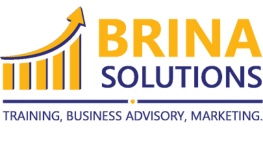
In today’s data-driven world, businesses have access to vast amounts of information that can guide marketing strategies, enhance customer experiences, and drive overall business growth. The challenge lies in effectively leveraging this data to make informed decisions. By utilizing marketing analytics, businesses can transform raw data into actionable insights, leading to better marketing strategies and higher returns.
In this blog post, we will explore how to use marketing data, including consumer analytics, profit and loss (P&L) data, and market performance results, to fuel business growth and inform decision-making.
1. What is Marketing Analytics?
Marketing analytics involves the processes and technologies that enable marketers to measure the performance of their campaigns, understand consumer behavior, and assess the overall effectiveness of their strategies. This data provides insights into customer preferences, buying patterns, campaign success, and much more. The ultimate goal is to optimize marketing efforts and maximize business growth.
There are three core categories of data used in marketing analytics:
- Descriptive analytics: Provides historical insights into what has happened (e.g., website traffic, sales metrics).
- Predictive analytics: Uses data to predict future trends (e.g., customer lifetime value, sales forecasting).
- Prescriptive analytics: Suggests actionable steps based on the data (e.g., adjusting campaigns for higher ROI).
2. The Importance of Marketing Analytics for Business Growth
Leveraging marketing analytics offers several advantages that can significantly impact business growth:
a) Informed Decision-Making
Data-driven decision-making replaces gut instincts with hard evidence. Instead of relying on assumptions, businesses can base their strategies on real data, making decisions more objective and accurate. Marketing data helps pinpoint the best-performing campaigns, channels, and audience segments, leading to improved results and higher ROI.
Example: Netflix’s Data-Driven Content Decisions
Netflix is a prime example of a company that uses data to inform decision-making. By analyzing viewer behavior—such as how many episodes are watched, when users pause, and what genres are popular—Netflix makes decisions on which shows to produce and promote. This data-driven approach has led to highly successful original content that resonates with audiences.
Takeaway: Use marketing analytics to make informed decisions, ensuring your resources are allocated to the strategies and channels that yield the highest return.
b) Enhanced Customer Experience
Understanding your customers is the key to delivering personalized experiences. Marketing analytics provides insights into customer behavior, preferences, and pain points, allowing businesses to tailor their messaging and offerings accordingly. By analyzing customer data, businesses can deliver the right message, at the right time, on the right platform, creating a seamless and engaging customer journey.
Example: Amazon’s Personalization Strategy
Amazon leverages consumer analytics to deliver a personalized shopping experience. By tracking browsing history, purchase behavior, and product searches, Amazon is able to recommend products tailored to each individual. This strategy not only improves the customer experience but also drives higher conversion rates.
Takeaway: Use consumer insights to create personalized marketing strategies that resonate with your audience and improve the overall customer experience.
c) Measuring Campaign Performance
Marketing analytics provides clear insights into the effectiveness of campaigns by tracking key performance indicators (KPIs) such as conversion rates, engagement levels, and return on ad spend (ROAS). This allows marketers to identify what’s working and what needs improvement, ensuring that campaigns are continuously optimized for better results.
Example: Google Ads Performance Tracking
Google Ads offers a robust analytics platform that allows businesses to track how well their ads are performing. By measuring clicks, impressions, and conversions, businesses can adjust their campaigns in real-time to increase efficiency and ROI.
Takeaway: Measure your campaigns consistently, and use the data to optimize performance and maximize the impact of your marketing efforts.
3. Key Marketing Analytics Tools
To effectively leverage marketing analytics, businesses need the right tools. Here are some popular tools that can help you gather, analyze, and act on marketing data:
a) Google Analytics
Google Analytics is one of the most popular tools for tracking website traffic, user behavior, and conversion rates. It provides in-depth insights into how customers are interacting with your website and which channels are driving the most traffic.
b) HubSpot
HubSpot offers comprehensive marketing analytics that cover everything from lead generation to campaign performance. It provides detailed reports on email marketing, social media engagement, and website performance, making it a go-to tool for inbound marketing strategies.
c) Tableau
For businesses looking to visualize their data, Tableau is an excellent option. It allows you to create interactive dashboards and reports that help you understand trends and make data-driven decisions quickly.
Takeaway: Invest in marketing analytics tools to gather and analyze data, helping you make more informed and impactful decisions.
4. Using Consumer Analytics to Improve Marketing Effectiveness
Consumer analytics involves collecting and analyzing data about customer behavior, preferences, and demographics. This data is essential for understanding who your customers are, what they want, and how they interact with your brand. By applying consumer analytics, businesses can create highly targeted marketing strategies that resonate with specific customer segments.
a) Segmenting Your Audience
One of the most effective ways to use consumer analytics is to segment your audience. By dividing your customer base into groups based on behavior, demographics, or purchasing patterns, you can create personalized marketing messages for each segment.
Example: Spotify’s Segmented Playlists
Spotify uses consumer data to create personalized playlists like Discover Weekly and Wrapped. These playlists are tailored to each user’s listening habits, making them feel more connected to the platform. This segmentation strategy has helped Spotify drive engagement and build loyalty among users.
Takeaway: Use consumer data to segment your audience and deliver personalized marketing strategies that cater to specific customer needs.
b) Predicting Customer Behavior
Consumer analytics can also help predict future customer behavior. By analyzing past purchasing patterns and browsing behavior, businesses can forecast customer needs and tailor their marketing strategies accordingly.
Example: Predictive Analytics in E-commerce
Many e-commerce platforms use predictive analytics to recommend products that customers are likely to buy based on their previous behavior. By using data to predict customer preferences, businesses can offer personalized suggestions that lead to higher conversions.
Takeaway: Use predictive analytics to anticipate customer needs and deliver tailored marketing campaigns that encourage conversions.
5. Leveraging P&L Data for Strategic Growth
Profit and Loss (P&L) statements provide valuable insights into a company’s financial health and profitability. Marketing teams can use this data to better understand how their campaigns are contributing to the company’s bottom line. By tracking the cost of customer acquisition (CAC) and return on investment (ROI), businesses can identify which marketing strategies are driving growth and which are draining resources.
a) Maximizing ROI
By analyzing P&L data, businesses can determine which marketing channels and strategies provide the highest ROI. This allows marketers to allocate resources more effectively, ensuring that budgets are spent on initiatives that drive growth.
Example: Social Media Advertising ROI
Many companies track the ROI of their social media advertising campaigns to understand how much revenue each platform generates. By comparing the ROI across different platforms, businesses can identify the most cost-effective channels and focus their efforts accordingly.
Takeaway: Regularly analyze P&L data to understand which marketing strategies are driving growth and optimize your budget for maximum efficiency.
6. Integrating Market Performance Data
Market performance data provides insights into how well your brand is performing in the broader market. By analyzing market trends, competitor performance, and customer sentiment, businesses can adapt their marketing strategies to stay competitive and meet market demand.
a) Adapting to Market Trends
Staying ahead of market trends is crucial for maintaining relevance in a competitive industry. By analyzing market data, businesses can identify emerging trends and adjust their marketing strategies to capitalize on new opportunities.
Example: Fast Fashion Adapting to Trends
Fast fashion retailers like Zara use market performance data to stay on top of rapidly changing fashion trends. By analyzing what’s popular among consumers, Zara is able to quickly produce and promote items that are in high demand, staying ahead of the competition.
Takeaway: Use market performance data to stay agile and adapt your marketing strategies to capitalize on emerging trends.
Conclusion: Turning Data into Decisions
Leveraging marketing analytics is essential for driving business growth. By using consumer insights, P&L data, and market performance results, businesses can make informed decisions that optimize marketing strategies, improve customer experiences, and increase profitability. In a data-driven world, businesses that effectively use marketing analytics will be better equipped to stay competitive and grow sustainably.
At Brina Solutions, we help businesses turn data into actionable insights that drive growth. Let us guide you in leveraging marketing analytics to make informed decisions that enhance your campaigns and maximize results. Contact us today to learn more!







Leave a Reply